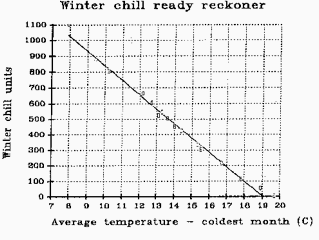 Rats! Not much discussed in polite company, rats are just as big a part of the urban and suburban experience as dogs and cats. They have adapted incredibly successfully to living in close quarters with people, and we create ideal conditions for them to thrive with all the food we leave lying around. Remember one way or another we throw away about 40% of the food we produce in Australia. No wonder rats are everywhere.
Rats! Not much discussed in polite company, rats are just as big a part of the urban and suburban experience as dogs and cats. They have adapted incredibly successfully to living in close quarters with people, and we create ideal conditions for them to thrive with all the food we leave lying around. Remember one way or another we throw away about 40% of the food we produce in Australia. No wonder rats are everywhere.
In the suburbs especially you may not notice them until Winter, when they take shelter in your roof. Once they’ve moved in rats make an obvious pitter patter of little feet running around in the ceiling and further squeeze in through little gaps in the walls into your house, lured by wonderful smells from your kitchen, where they eagerly find all your not so well protected foodstuffs. Have you looked behind your cooker lately?
Rats can easily enter under doors if the gap is 15mm or so (another good reason to get draft excluders on outside doors), and can climb up the outside walls or drainage pipes. Indoors that agility translates to easy climb up chimneys, tables, up over and into kitchen cupboards, they’re really very agile.
Not only a bit annoying, wild rodents including rats, can carry a variety of disease pathogens, The Black Death is traditionally believed to have been caused by the micro-organism Yersinia pestis, carried by the tropical rat flea which lived on black rats during the epidemic outbreaks of the Middle Ages, as well as much closer to home in Sydney in 1900. Other diseases linked to pest rodents include classical swine fever (not to be confused with swine flu) and foot-and-mouth disease.[1]
So what do you do if you have unwanted rodents in your house? Block up the holes where they are getting through. To close up any small hole from which they are entering, chicken wire works well. If you only want a small piece or two, keep your eyes open for suitable offcuts during council big trash pick-ups and freecycle. Don’t leave food lying around, where rodents and other animals can find it. If you don’t have what they consider food available then they are much less likely to come and visit.

If they are still getting in and you just want them gone, the choices in the store seem endless! snap traps, electronic traps, live traps, chemical baits, glue traps, and more…
As for the baits out there, people used to poison rats with an anticoagulant, warfarin, found in products such as Ratsack™, but many rats now carry a gene resistant to that particular anticoagulant, making it ineffective, however much you pump out into your environment. We have simply bred a more resilient rat! Newer rodenticides, come in 2 basic forms- a single dose quick kill variety (bromadiolone) and the multidose version (coumatetralyle) . If you are driven to having to eradicate your highly possibly growing family of rats (with 24 offspring in a year) by a chemical method, the multidose appears at this stage not to give secondary poisoning to pets or wildlife who eat the unfortunate creatures. The problem with this kill first ask questions later, is that you don’t know what you’ve got til its gone. “Snap!” a little late to find you’ve accidentally destroyed a super rare, protected or even useful species. Who needs to live with that level of guilt?
So, First Catch Your Rat or what ever else it is running around out there…
Using a live trap lets you identify what your visitor might be, and can allow a more humane way to deal with your visitors. Live traps designed for small animals are fairly commonly available at hardware stores. If your unknown beastie is bigger, you’ll need to find a licensed trapper, call local RSPCA, vet or pest control for advice here. Be very aware that being caught in a trap is a distressing experience for any wild animal however small. You will need to be prepared with whatever measures you’re intending to take beforehand. This will mean preparing to consider the animal’s welfare through this process. Don’t catch an animal if you don’t know what you can and can’t do with it first. Once you have your trap set you will need to check it regularly to see if you have made a catch, because leaving an animal in a trap will cause undue stress. Overall your objective is to cause the least interference with the animal’s welfare, and that applies equally whether Antichinus or Rattus rattus. All animals deserve your respect.
Once you have your critter in a cage you’ll want to quickly identify it. The biggest deciding factor is the Roof rat’s furless tail, which is always longer than it’s body. Having decided that you have is Rattus rattus, or perhaps Rattus norvegicus is then only the beginning; what to do with it next? Just bear in mind if you release it less than about 2 km it is very likely to find it’s way back home, and release it in an unknown environment and it’s probably going to die a slow death through hunger. Rats will indeed eat what you leave lying around, or not well protected, but consider too that some rats, like Rattus norvegicus, are omnivores, and are also really rather partial to gorging on snails.
If there are rats around on or near your property but they’re not getting into your house, your veggie patch and your food are protected and they pose no immediate threat, consider if there are predators who could do the job for you. Snakes or powerful owls enjoy a live ratburger* given the chance, so investigate if you could positively encourage them. Awake to find that you don’t have a rat poison deficiency in your cupboards so much as a natural rat predator deficiency in your neighbourhood. You may have inadvertently just creating a lovely niche for rats, but not much else. Could you actively help tip the balance in their favour, and create an environment that’s welcoming to a more diverse range of wildlife, and help bring the rats’ natural predators back? So, what are the rats really telling you?

Words by Katoomba Street Permies Sue and Kat [CC BY-NC-SA 3.0], images from Wikipedia, and by Lord Jim, and Charles Danoff on Flickr**
References, and further information about rat identification, humane dispatch and creating wildlife friendly habitats.
[1] http://en.wikipedia.org/wiki/Rat
http://kb.rspca.org.au/What-is-the-most-humane-way-to-kill-pest-rats-and-mice_139.html
http://www.ufaw.org.uk/rodents.php
http://australianmuseum.net.au/Bush-Rat/
http://www.backyards4wildlife.com.au
* Rats are eaten as part of an ordinary diet in some places
**mouse over images which link back to their originals on flickr.com




 The band of blue is also narrowing as it fades meaning winter is also getting shorter. In the upper mountains its a familiar story, the snows don’t come down in big drifts like they used to. In Katoomba if the temperature rises as predicted, we’ll see an increase in temperature by 2 °C on average over the year, which will bring Katoomba chill hours down to about 1000. That will knock off very few varieties out of production. In Springwood, which is currently marginal for high chill requirement fruits, its a different story. That 2° C increase in Springwood would drop their chill hours well below into 900 , so they’ll either have to get a bit nifty with engineering cooler microclimates around their existing chill requiring trees or perhaps get more familiar with trees traditionally grown at latitudes nearer the tropics.
The band of blue is also narrowing as it fades meaning winter is also getting shorter. In the upper mountains its a familiar story, the snows don’t come down in big drifts like they used to. In Katoomba if the temperature rises as predicted, we’ll see an increase in temperature by 2 °C on average over the year, which will bring Katoomba chill hours down to about 1000. That will knock off very few varieties out of production. In Springwood, which is currently marginal for high chill requirement fruits, its a different story. That 2° C increase in Springwood would drop their chill hours well below into 900 , so they’ll either have to get a bit nifty with engineering cooler microclimates around their existing chill requiring trees or perhaps get more familiar with trees traditionally grown at latitudes nearer the tropics.





